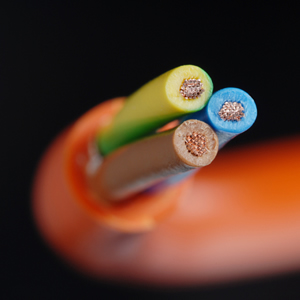The Wiring Harness Manufacturer’s Association chairman discusses industry changes over the last year.

In preparation for the Wiring Harness Manufacturer’s Association annual conference, Connector Supplier + Cable Assembly’s Patricia Staino spoke to WHMA Chairman Rick Bromm about how the industry has changed in the last year.
CAS: How has the wire and cable industry changed since 2013’s conference?
RB: Manufacturing continues to shift to North America from Asia, and there has been an increase in OEM companies changing their manufacturing strategies to “buy versus make.”
CAS: Is there anything new and different about this year’s conference?
RB: We’ve achieved a 10-year high in number of exhibitors. Also, there is an emphasis on networking with fellow industry members to share ideas and solicit feedback.
CAS: This year’s conference runs the gamut — technology issues, specifications/standards, best business practices, even a discussion of Obamacare. Why is it important to have such a broad range of topics for your attendees?
RB: We try to focus on topics that are important to each of our members’ businesses. The business environment is extremely fluid and we want to bring value to the conference by addressing high impact areas for each of the attendees.
CAS: What are some of the key issues currently affecting the wire and cable industry? Are these the same as last year or are things trending in a different way right now?
RB: The OEMs’ perception of wire harnesses and cable assemblies continues to be an issue. The expertise required to build an assembly is under-appreciated. We hear “it’s just wire and connectors” quite often. It is usually the last design item on a project. This also ties into an agreed-upon understanding of acceptable workmanship standards. This is why so much emphasis has been put on the A620 standards.
CAS: Offshoring and re-shoring is a topic on this year’s agenda. Why is this of interest to your members, exhibitors, and attendees?
RB: It has broad implications within the industry. It can impact many areas of a company, depending on its overall business strategy. It affects and is affected by decisions about automation investment, location of a manufacturing site, complexity/type of assembly you produce, and size/type of customer or industry you target.
CAS: What standards are most important to the industry and its customers right now? In particular, what is the significance of A-620 and how will it affect the industry?
RB: There hasn’t been a universally recognized workmanship standard for our industry. The lack of these standards has led to conflicts in what is acceptable product. The A-620 standard is accepted internationally and fills the “gaps” between the connector/wire manufacturers’ unique build specifications and the other workmanship areas not covered in those specifications. It creates a common “language” between OEMs and wire harness manufacturers. We promote these standards to the OEM community and encourage manufacturers to reference them on all their harness/assembly drawings. We feel it is very important for our members to adopt the standard for their future success.
CAS: In the next year, what will affect the industry most?
RB: Healthcare costs continue to be a big concern for everyone; it has the potential to increase outsourcing from OEMs who currently make their own assemblies. Other issues include a rise in supply chain costs as the economy continues to improve. The fact that OEMs will continue to push for shorter lead times and limited liabilities on inventory will also have an impact.
CAS: How much attention will attendees pay to “What’s New in the Industry” after an all-day golfing tournament at Disney?
RB: It’s amazing how focused a group of people can be when they have relaxed in the sun all day. All kidding aside, we do see that the majority of the attendees take this conference seriously. They are there to learn and absorb information that can help them with their businesses.

View the original article on the Connector Supplier + Cable Assembly website.

